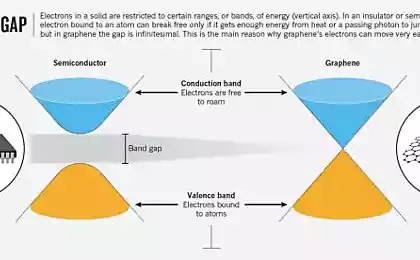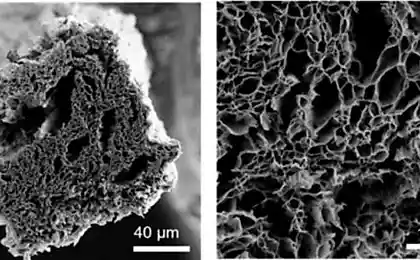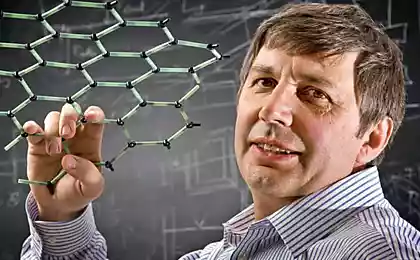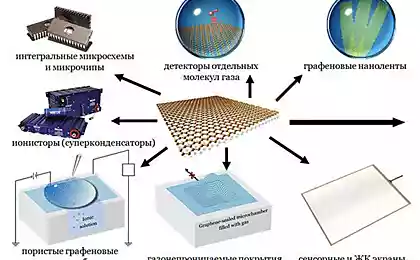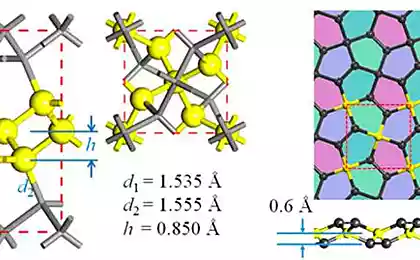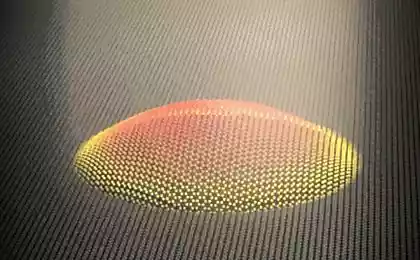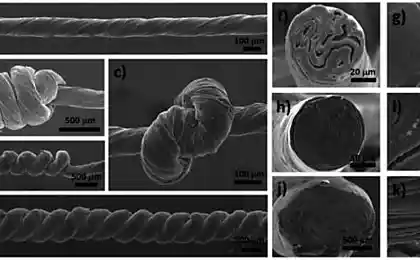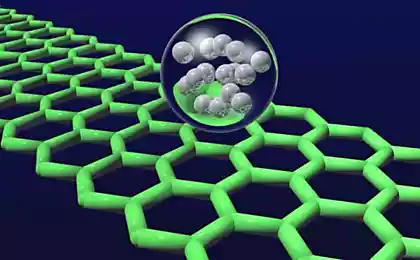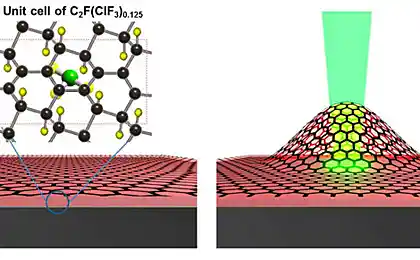412
Gibkiy transparent electronics based on graphene
Translucent flexible electronics is already present not only in science fiction stories, but in real life, thanks to the unique properties of graphene, which was discovered by researchers at the University of Manchester.

Recently in the scientific journal Nature Materials published a study in which scientists from the University of Manchester and University of Sheffield show that new 2D "designer materials" can be produced to create flexible, transparent and more efficient electronic devices.
The team under the leadership of Nobel laureate sir Konstantin Novoselov, made the breakthrough by creating LEDs which were engineered on an atomic level.
New research shows that graphene and related 2D materials can be used to create light emitting devices for the next generation of mobile phones, tablets and televisions to make them incredibly thin, flexible, durable and even semi-transparent.
The led device was assembled using a combination of different 2D crystals, it emits light across its surface. Being so thin, the thickness is only 10-40 atoms, these new components can become the basis for the first generation translucent smart devices.
Graphene is a one atom thick was first isolated and explored in 2004 at the University of Manchester. Its potential properties is huge, but one of the first areas in which this product can be used is electronics. Other 2D materials such as boron nitride and molybdenum disulphide, have since been discovered, opened a whole new field of research and applied opportunities.
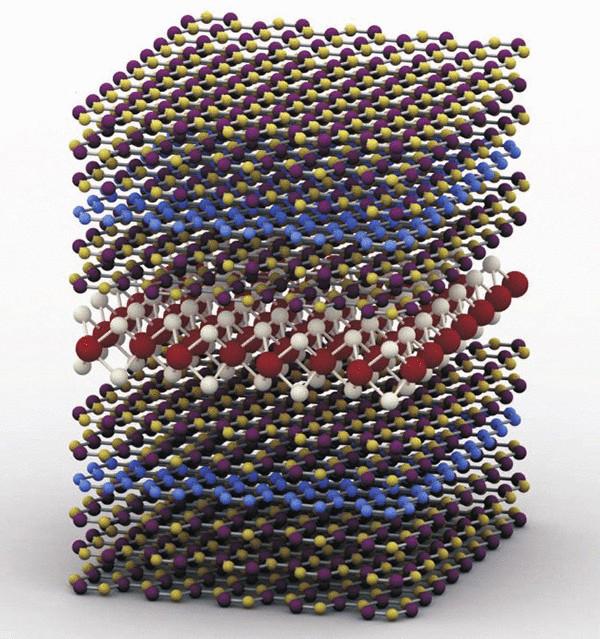
New opportunities for optoelectronics based on graphene have been realized by building heterostructures – placed layers of various 2D materials – tasks they need functionality and introducing quantum wells to control the movement of electrons.
Freddie withers (Withers), research fellow at the Royal Academy of engineering research the University of Manchester, who led the production of the devices, said: "as our new type of led consists of only a few atomic layers of 2D materials they are flexible and transparent. We anticipate that this work will be the impetus to create a new generation of optoelectronic devices, from simple transparent lighting and lasers to more complex applications."
Explaining the creation of the led device sir Konstantin Novoselov said: "by Preparing the heterostructures on elastic and transparent substrates, we show that they can become the basis for flexible and semi-transparent electronics."
"The range of functionalities for the demonstrated heterostructures is expected to grow further on increasing the number of available 2D crystals and improving their electronic quality."
Professor Alexander Tartakovskii from the University of Sheffield added: "the New LED structures are robust and show no significant change in performance over many weeks of measurements.
Despite the fact that production is just beginning, the quantum efficiency (number of emitted photons per one electron) is already comparable to organic LEDs." published
P. S. And remember, only by changing their consumption — together we change the world! ©
Source: www.ekopower.ru/?p=3298

Recently in the scientific journal Nature Materials published a study in which scientists from the University of Manchester and University of Sheffield show that new 2D "designer materials" can be produced to create flexible, transparent and more efficient electronic devices.
The team under the leadership of Nobel laureate sir Konstantin Novoselov, made the breakthrough by creating LEDs which were engineered on an atomic level.
New research shows that graphene and related 2D materials can be used to create light emitting devices for the next generation of mobile phones, tablets and televisions to make them incredibly thin, flexible, durable and even semi-transparent.
The led device was assembled using a combination of different 2D crystals, it emits light across its surface. Being so thin, the thickness is only 10-40 atoms, these new components can become the basis for the first generation translucent smart devices.
Graphene is a one atom thick was first isolated and explored in 2004 at the University of Manchester. Its potential properties is huge, but one of the first areas in which this product can be used is electronics. Other 2D materials such as boron nitride and molybdenum disulphide, have since been discovered, opened a whole new field of research and applied opportunities.

New opportunities for optoelectronics based on graphene have been realized by building heterostructures – placed layers of various 2D materials – tasks they need functionality and introducing quantum wells to control the movement of electrons.
Freddie withers (Withers), research fellow at the Royal Academy of engineering research the University of Manchester, who led the production of the devices, said: "as our new type of led consists of only a few atomic layers of 2D materials they are flexible and transparent. We anticipate that this work will be the impetus to create a new generation of optoelectronic devices, from simple transparent lighting and lasers to more complex applications."
Explaining the creation of the led device sir Konstantin Novoselov said: "by Preparing the heterostructures on elastic and transparent substrates, we show that they can become the basis for flexible and semi-transparent electronics."
"The range of functionalities for the demonstrated heterostructures is expected to grow further on increasing the number of available 2D crystals and improving their electronic quality."
Professor Alexander Tartakovskii from the University of Sheffield added: "the New LED structures are robust and show no significant change in performance over many weeks of measurements.
Despite the fact that production is just beginning, the quantum efficiency (number of emitted photons per one electron) is already comparable to organic LEDs." published
P. S. And remember, only by changing their consumption — together we change the world! ©
Source: www.ekopower.ru/?p=3298
